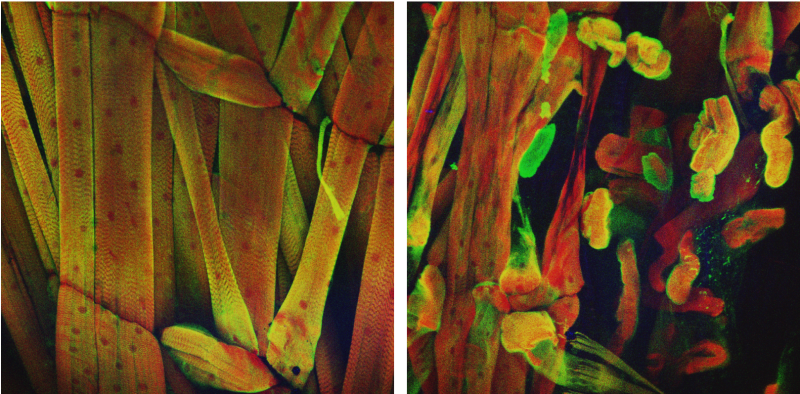By Sophie Arthur
September 21, 2020
Time to read: 3 minutes
Cachexia is a condition that causes extreme weight loss and muscle wastage. It is a symptom of persistent conditions such as cancer. Cancer patients who display cachexia as a symptom are often in the late stage of their disease and, unfortunately, there are currently no therapeutics to treat it.
It has also been unclear why cancer patients develop this symptom. Is there a benefit to the cancer itself from this muscle wasting syndrome, and if there is, what is happening at a molecular level?
Research from the Metabolism and Cell Growth group at the MRC LMS published on 16 September in the journal Nature Communications has revealed that the muscle wastage induced by the cancer is actually promoting tumour growth.
Using the fruit fly Drosophila melanogaster as a model, the researchers unveiled this ‘nutritional-metabolic circuit’. They found that muscle wasting wasn’t just a consequence of the disease, but that the tumours were actively promoting muscle wastage and the resulting products were promoting tumour growth further. More tumour growth resulted in further muscle wastage creating a vicious circuit that ultimately contributes to fatality.

The muscle wasting resulted in degradation of muscle proteins. These proteins were broken down into its smaller building blocks called amino acids. The tumour would then consume those newly available nutrients to fuel its growth.
In order for the tumours to consume amino acids, the tumours expressed a specific nutrient transporter. These transporter proteins sit in the membrane of the cell and act like gates, allowing specific nutrients into the cell. One nutrient transporter identified in the tumour cells was responsible for the uptake of an amino acid called proline, which the tumour cells use as fuel to promote growth. These nutrient transporters can also transport the amino acids alanine and glycine into the cell, but it was proline levels that were elevated after muscle wastage.
Now that it has been revealed that muscle wasting promotes the growth of a tumour through the uptake of proline by a specific nutrient transporter, it might be possible to identify compounds which disrupt this ‘nutritional-metabolic circuit’. The group identified a compound called Indole-3-propionic acid (IPA) that could bind to the nutrient transporter and stop proline from being consumed by the tumour cells. Feeding IPA to the flies prevented tumour growth, and stopped muscle wasting too. In collaboration with Louise Fets, Head of the Drug Transport and Metabolism group at the MRC LMS, the researchers also showed that IPA can suppress tumour growth in human cancer cells.
Susumu Hirabayashi, Head of the Metabolism and Cell Growth group, discussed the next steps for the research:
“Now we have shown that IPA helps to block the nutrient transporter in both the fly model and the mammalian cells, it is quite likely that the mechanism could also work in mammalian models. The next steps for my lab will look at validating the effects of IPA in mouse models. I also want to thank Andre Brown and the Behavioural Genomics group, the Bioinformatics group, Genomics Facility and the Proteomics and Metabolomics Facility at the MRC LMS for their collaboration and support during this project.”
‘Systemic muscle wasting and coordinated tumour response drive tumourigenesis’ was published on 16 September in Nature Communications. Read the full article here.